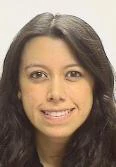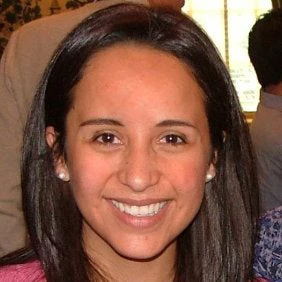 Students in Honduras
Students in Honduras
The results from PISA 2018 highlight the learning crisis in Latin America and suggest that promoting better and more equitable learning continues to be the most important challenges to be tackled by the education systems in the region
Juan is a young student who lives in Santo Domingo, Dominican Republic, and is about to finish compulsory education. He loves reading, playing soccer, dancing salsa, and dreams about going to college in Europe after graduating from school. Juan studies hard and has always been at the top of his class. His parents are very happy with all the learning he is getting at school as this would allow him to fulfill his dreams. But, would he be able to get all the learning credentials needed to access a college in Europe after graduating? What our students in Latin America know and can do compared to students in other countries?
The Programme for International Student Assessment (PISA) measures how much 15-year-old students around the world know and can do. PISA assessments do not just measure if students can reproduce what they learn at school, but also how well they can extrapolate from what they have learned and apply this knowledge in unfamiliar settings, both in and outside of school.
The results from the latest PISA, conducted in 2018, were released on December 3, 2019 by the Organisation for Economic Co-operation and Development (OECD). Almost 600,000 students in representation of 32 million 15-year-olds from 79 countries and education systems around the world participated in this initiative. The main subject in the latest PISA assessment was reading, with mathematics, science, global competence, and financial literacy included as minor areas of assessment.
How many countries from Latin America participated in PISA 2018?
More than half of the countries in Latin America participated in PISA 2018, showing the strong commitment in the region to measure learning. When PISA started, in 2000, only five countries in the region participated in this assessment (Table 1). By 2018, this number had doubled, and participating countries included: Argentina, Brazil, Chile, Colombia, Costa Rica, Dominican Republic, Mexico, Panama, Peru, and Uruguay.

1 Administered the PISA 2000 assessment in 2001/2002.
2 Administered the PISA 2009 assessment in 2010.
3 Although Argentina participated in PISA 2015, technical problems with their samples prevented results from being published.
4 Ecuador, Guatemala, Honduras, and Paraguay participated in PISA for Development (PISA-D).
Source: OECD, PISA documentation.
What students in Latin America know and can do?
The PISA 2018 results confirm that Latin America is facing a learning crisis. On average, 15-year-old students in the region are three years behind in reading, mathematics, and science of a student in an OECD country (Figure 1). Chile and Uruguay continue to lead the ranking as the best education systems in Latin America, but their performance is on average two years behind of OECD students. Moreover, differences in performance across countries in the region are very large. For instance, Chilean students perform on average three years ahead of the Dominican Republic students.
One in two students in the region does not reach the basic reading proficiency level required in PISA assessment compared to one in five students in the OECD countries (Figure 2). Students who do not achieve the basic level of proficiency in reading are not able to identify the main idea in a text, find information based on explicit criteria, or reflect on the purpose and form of texts when explicitly directed to do so. This is very worrisome as students who are not able to achieve the basic reading proficiency level will not be able to continue learning and face a high risk of dropping out of school.

Between 2000 and 2018, a few countries in the region improved their learning outcomes, but these results have stagnated for many others. It is important to note that the stagnation of results is also observed among most of the OECD countries. This illustrating the fact that education reforms can take a lot of time to materialize in improved learning outcomes. Based on the PISA 2018 reading results, countries in the region can be broadly classified into three categories (Figure 3):
- Positive long-term learning trends: The most impressive gains in learning in the past two decades were observed in Peru, which improved its reading scores by 2.4 years of schooling. during this period, Chile and Colombia also improved their reading scores by 1.4 and 0.9 grade levels, respectively.
- Flat long-term learning trends: Brazil, Mexico, Argentina, Uruguay, and Panama results are consistent over time and have not changed much over the past two decades.
- Negative short-term learning trends: Costa Rica and the Dominican Republic show declining trends in the reading scores since 2009 and 2015, respectively.
What were the coverage rates in PISA 2018 and what these imply?
Compared to the past decade, more 15-year-olds in the region are trying to complete compulsory education, but graduating from school continues to be a dream that falls short of the aspirations of many of them. Seven in 10 students in the region were tested in PISA 2018. This represents an improvement in the regional coverage rate of this assessment of six percent over the past decade (Figure 4). Still, this regional coverage rate is low compared to the OECD countries, where nine in 10 students are tested. That a student was tested in PISA implies that he was still attending school by age 15 and had completed at least 6 years of education – the only two criteria to participate in PISA 2018. Given that primary education enrollment is almost universal in the region, the low coverage rate in PISA implies that an important part of students in the region are dropping out from school before completing compulsory education (around six years). The international evidence suggests that, on average, students who drop-out of school prematurely will earn less and experience more social and economic challenges than those with more years of education.

What about the equity in learning outcomes?
Learning gaps between students from better-off and most disadvantaged backgrounds are very large. For instance, in Uruguay and Brazil, students from the most disadvantaged backgrounds are, on average, four years of schooling behind those from better-off backgrounds (Figure 5). At the same time, the top two percent of students in these two countries perform at the same level than the best nine percent of students in the OECD countries. Reducing the inequalities in the education systems is fundamental to address the pervasive large levels of income inequality observed in the region, which significantly prevent long-term growth and poverty reduction.
The recent PISA 2018 results offer an opportunity for the countries in the region to reflect about their ability to transform their educational inputs into better learning. These results should not be used to stigmatize education systems that are facing challenges. Instead, they should be used to understand the magnitude of the learning crisis and to advocate for better learning for all. The World Bank recently launched an initiative to advocate for the elimination of learning poverty around the world. Measuring learning is certainly the foundation to advocate for and improve learning outcomes. What you cannot measure, you cannot improve. And, in this respect, Latin America is certainly going in the right direction. Improving learning will also require aligning Latin American education systems with this objective, including by making sure the conditions for (equitable) learning are in place. This way, we can help Juan accumulate more learning to give him the opportunity to have a brighter future.





Join the Conversation